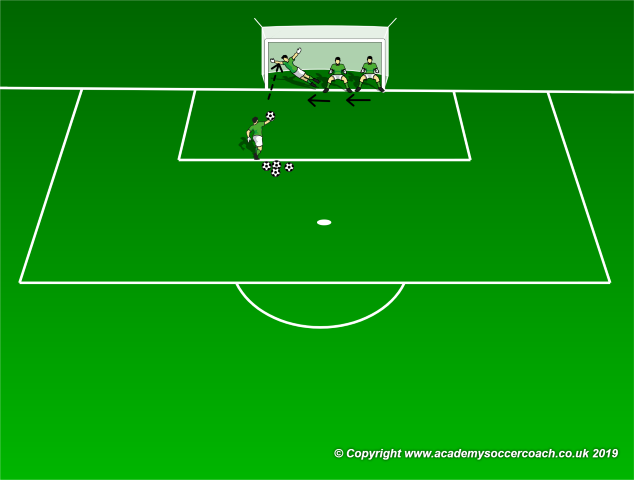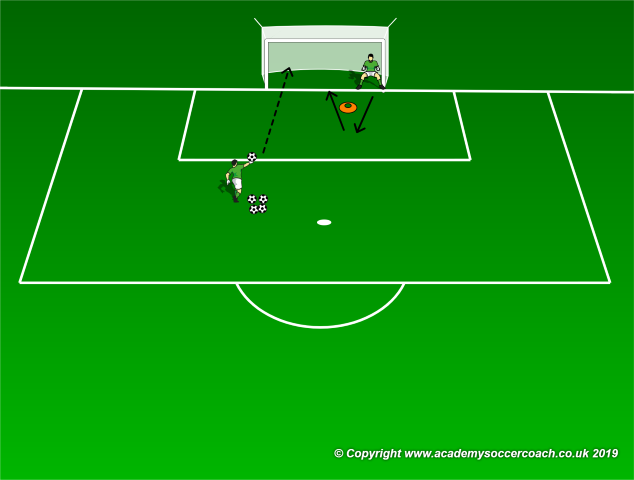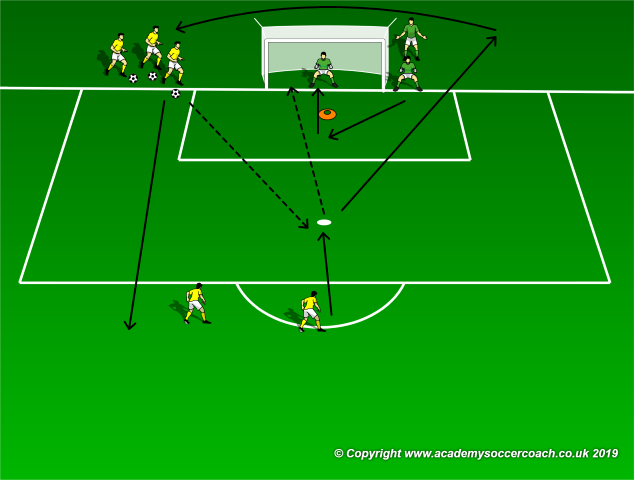By Mike Smith -
I can’t count the times I have heard a keeper say “ I was just a step away” after missing a save, yet continue to leave their feet immediately or stretch their arms out first instead of taking that extra step.? The bad habits of immediately jumping or reaching too soon go against two simple facts; our arms are the fastest parts of our body ( thus can be moved last and still get there) and our feet get our arms in position. Once a keeper comes to understand these two truths, they will immediately take their next developmental step, and it can happen quickly: a poor keeper can become good and a good keeper can become great by taking the extra step FIRST and learning to let their feet get their hands into position.
Just like field players need to move the center line of their body into the path of the ball before making the touch, the keeper should seek to move the center of their chest to the ball first, and only jump when they are running out of time to get there. By focusing on moving their chest to the ball, they will find their arms are in position to do more than barely miss or get their finger tips on it.
Set Up


To start, have two keepers work together inside the penalty area, beginning with the goalie box ( as shown above ). The keeper in the net will start on one side, take a shuffle step, and then make a save on the far side. The other keeper can throw the balls to start to make sure the service is accurate and able to be saved. The key is for the keeper to make the side step / shuffle FIRST, before leaping to make the save.


Next, as shown above, place a cone a yard or two off the line just off center of the goal and have the keeper run out and then shuffle back to the center before making the save. The keeper serving the ball should release it as soon as the keeper in the net starts moving backward. The keeper in the net CAN NOT jump until they hit the line. They may take the step to the line back at an angle, but MUST leave from the line after their last step.
Progression


Finally, bring in the attackers to make this a full-fledged shooting activity. As shown above, the only condition on the keeper is they must move out in front of the cone, now centered up 1 or 2 yards off the goal line before setting up to make the save. The keeper can move from the post as soon as the serving attacker sends the ball. The shooting attacker starts at the top of the arc and moves to shoot from around the penalty mark. The keeper can make any save required – catch, parry, punch but should do so from a less extended position where their arms are relaxed enough to have multiple options.
Coaching Points
The coach should focus the keeper on keeping their feet active, taking a step toward the save first and trying to get the center of their chest to the ball – which will get their arms and hands in better position to make the save.
By Mike Smith
Currently the Head Coach for University Heights Academy Boys Soccer in Hopkinsville, KY , Mike is in his 14th year as a high school head coach with 23 years coaching experience overall and 34 year as a student and fan of the game. He holds a USSF D License.


